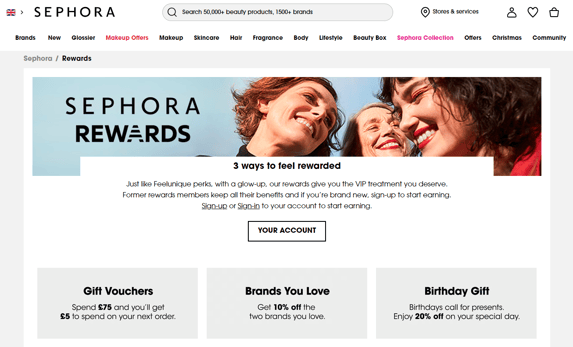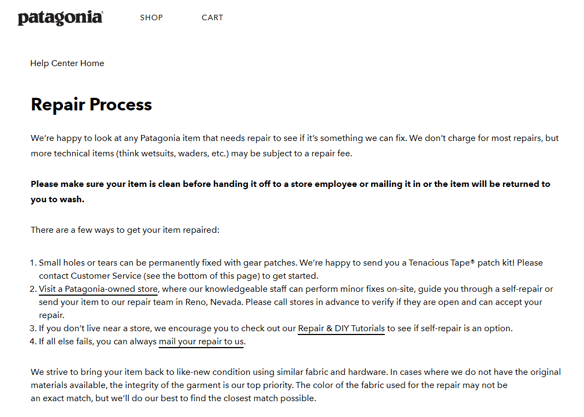Did you know that a customer who is satisfied by an overwhelmingly positive experience is likely to spend 140% more after that experience than customers who report negative experiences?
Along with increasing your business’s revenue, happy customers can also help to spread the word about your services and boost your reputation. But did you know that there’s a difference between satisfying and delighting your clients?
In our guide, we’ve outlined the principles of customer delight and how it differs from satisfaction so you can go the extra mile to give your customers the best experiences possible. We’ve also included a few ways to measure delight so you can see exactly how your brand measures up and what you can do to improve.
What is customer delight?
Customer delight is when customers’ expectations are not just met but exceeded, leading to them feeling valued, appreciated, and having a positive experience with a brand.
It’s about creating memorable interactions that resonate with customers on a personal level, whether it’s by going above and beyond to help them solve a problem, fulfil their needs, or appeal to their interests. When a customer is delighted, it’s likely that they’ve received a level of service, engagement, and care that goes beyond the ordinary.
The idea behind customer delight is that a happy customer is more likely to become a loyal advocate for your brand. This is because impressing your prospective clients can cause them to return for future purchases and also share their experience with a broader net of personal and professional contacts.
How is customer delight different from customer satisfaction?
‘Customer satisfaction' and 'customer delight' might seem interchangeable at first glance; however, they are two different concepts.
In summary, customer satisfaction means simply meeting customer expectations, nothing more or less, whereas customer delight involves exceeding their expectations and leaving them with a lasting and positive experience.
With more and more businesses vying for attention in an increasingly crowded landscape, exceeding customer expectations is an excellent way to capture their attention — and keep it.
Why is customer delight important?
With over 70% of customers admitting to switching brands in search of better value options, businesses need to do more than just satisfy their customers to secure loyal clientele and foster long-term success.
Here are some ways that customer delight can be beneficial for businesses:
- Increases customer retention — A delighted customer is more likely to return and engage with your business on a recurring basis. It’s also often cheaper to retain existing customers than to acquire new ones, making customer delight a cost-effective strategy.
- Encourages positive word-of-mouth and referrals — Delighted customers become enthusiastic advocates for your business. They share their positive experiences through word-of-mouth, social media, and review platforms like Feefo, which can significantly amplify your brand's reach and reputation.
- Higher revenue potential — The more customers you can delight, the more willing they may be to engage and spend more. Plus, they’re also more likely to explore other offerings and services, leading to more potential avenues for generating revenue.
- More resilience to negative experiences — Even top-rated businesses receive the odd dissatisfied customer. When this occurs, delighted customers are more likely to forgive minor mishaps due to the positive emotional connection they have previously had with your brand.
- Enhances online reputation — In a digital era where online reviews greatly influence purchasing decisions, delighting customers can lead to a flourish of positive reviews. This enhanced online reputation, in turn, attracts more customers.
- Improved customer feedback — Delighted customers who have received an above-and-beyond experience with a brand could be more likely to provide invaluable feedback that can help businesses improve and innovate.
Six ways to drive customer delight
While your business might be succeeding at satisfying customer expectations, delighting them means going that extra mile.
Here are our top tips for how to create memorable, positive experiences for your audience to drive customer delight.
1. Understand your customers
The first step to delighting your customer is to understand who they are, what they value, and what their expectations might be. To build comprehensive customer profiles, you can gather this information with customer feedback, surveys, and data analytics. The more you know about your customers, the better positioned you are to surprise and delight them.
2. Personalise experiences
Personalisation is key to showing customers that you value each and every one of them. After all, your customers each have their own needs and concerns.
To address their individual requirements, tailor interactions, communications, and offerings to their preferences and past behaviours. This could range from sending personalised emails to recommending products or services that meet their specific pain points.
3. Reward loyalty
Your most loyal customers are invaluable as they can help spread word-of-mouth referrals and may be less likely to churn. As such, reward them for their loyalty to ensure they know that their business is appreciated and valued.
This could involve offering them exclusive discounts and perks for their consistent custom, such as implementing a loyalty program that gives them something back in the long term.
An unexpected benefit is sure to enhance the customer’s experience and delight them.
4. Engage proactively
Don’t wait for customers to reach out with problems – they may not even bother giving you the feedback and simply jump ship instead. To avoid this and reduce your churn rate, engage with them proactively to check on their satisfaction, offer assistance, or provide valuable information.
Not only does this allow you to gather helpful feedback that can help you to improve your service and offering, but proactive engagement shows that you care about their experience, even when there isn’t a problem to solve.
5. Educate and empower your customers
Offer resources, tools, and information to help your customers get more value from your products or services. This can help them to feel like your brand is on their side, supporting them to succeed.
Customers who feel empowered and informed will likely have a more positive perception of your brand.
6. Foster a customer-centric culture
People like to feel part of a community, as it’s reassuring to know that there are others out there who share the same needs, interests, or goals. That’s why cultivating a sense of user community can put your business towards the path of increasing delight.
Whether it’s to share experiences or resolve queries, a community setting allows your audience to interact with each other and your employees. It might be through a closed forum or via a social media channel.
How can you measure and monitor customer delight?
Understanding and assessing the level of customer delight your business is achieving is crucial for refining your strategies and ensuring you are on the right track towards fostering a loyal customer base.
Here are some insightful metrics and methods to measure and monitor customer delight:
1. Customer Delight Index (CDI)
The Customer Delight Index is a comprehensive metric that evaluates various aspects of customer experience to gauge the extent of customer delight. It could include things such as overall satisfaction, likelihood to repurchase, and likelihood to recommend, among others.
By analysing customer responses through surveys and feedback, businesses can derive a CDI score that reflects the degree of customer delight they are delivering.
2. Customer Satisfaction Score (CSAT)
A Customer Satisfaction Score is a straightforward metric that’s used to measure a customer’s immediate satisfaction with a product or service.
It typically involves asking customers to rate their feeling of satisfaction on a scale, usually from very dissatisfied to very satisfied or by giving a score of 1-5. While CSAT primarily focuses on satisfaction, a high CSAT score over time or across different areas of your business can be indicative of customer delight.
3. Churn rate
Churn rate reflects the percentage of customers who stop shopping and interacting with a business over a specific period. While it doesn’t analyse the reasons why, it gives a good indication of how many customers a company is losing over time.
A low churn rate often signifies that customers are content and potentially delighted with your service, while a high churn rate may suggest dissatisfaction.
The calculation for identifying customer churn rate is:
Lost customers ÷ total customers x 100 = Churn rate
Say, for example, your business had 5,000 customers from January to June, but you lost 1,000 of them. According to the calculation, your business would have a 20% churn rate for the six-month period.
Customer delight examples
Achieving customer delight may look different for various brands and industries. Here are a few of our favourite examples of how popular businesses have made their customers happy:
1. Amazon

Source: Amazon
One of the biggest and most well-known examples of a successful customer delight strategy is Amazon’ Prime Days.
Offered only to their Prime members, subscribed customers can access limited-time deals on thousands of products. For Prime members, this can mean huge savings on goods that the general public isn’t privy to.
It uses the ‘fear of missing out’ tactic to foster a sense of exclusivity and community, encouraging non-Prime members to sign up for the Prime membership and rewarding those who have already joined.
2. Sephora

Source: Sephora
When it comes to rewards schemes, Sephora has an excellent loyalty program in place to give back to their customers.
When customers sign up for Sephora Rewards, they become ‘Beauty Insider VIPs’ with access to exclusive offers – which just goes to show that clever naming conventions can also help to make customers feel special and prioritised.
As VIPs, they receive money off their future purchases, exclusive discounts on their favourite brands, and a yearly birthday treat of 20% off an order.
3. Patagonia

Source: Patagonia
Few brands manage to channel their company goals through their actions as well as Patagonia.
Patagonia’s key messaging to protect the planet and prioritise purpose over profit is evident throughout their campaigns, but also through their repair initiative. They understand that buying a new outdoor coat or piece of clothing can be an investment and that their customers want quality garments that last, which is why they offer their customers repairs on any previously purchased Patagonia items.
As well as helping to make their customer’s goods last longer, it naturally aligns with their sustainability ethos and ‘buy less, buy quality’ messaging.
Start delighting your customers with Feefo
Want to make your customers feel special and delighted? That’s where our experts at Feefo can help. From reaching out to your audience to gather tailored insights into what they really want, to measuring how loyal your customers are, we’ve got a solution to get you started.
Get in touch with us today to learn more.

.png)

